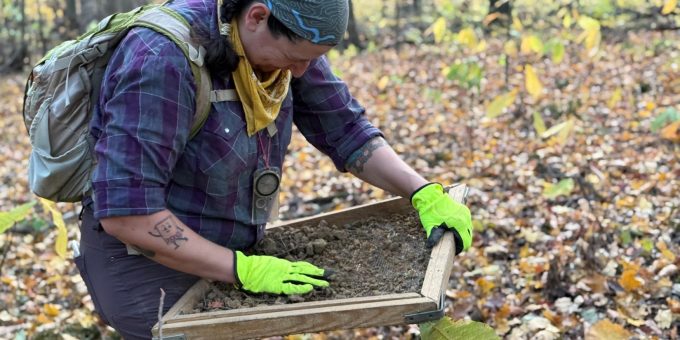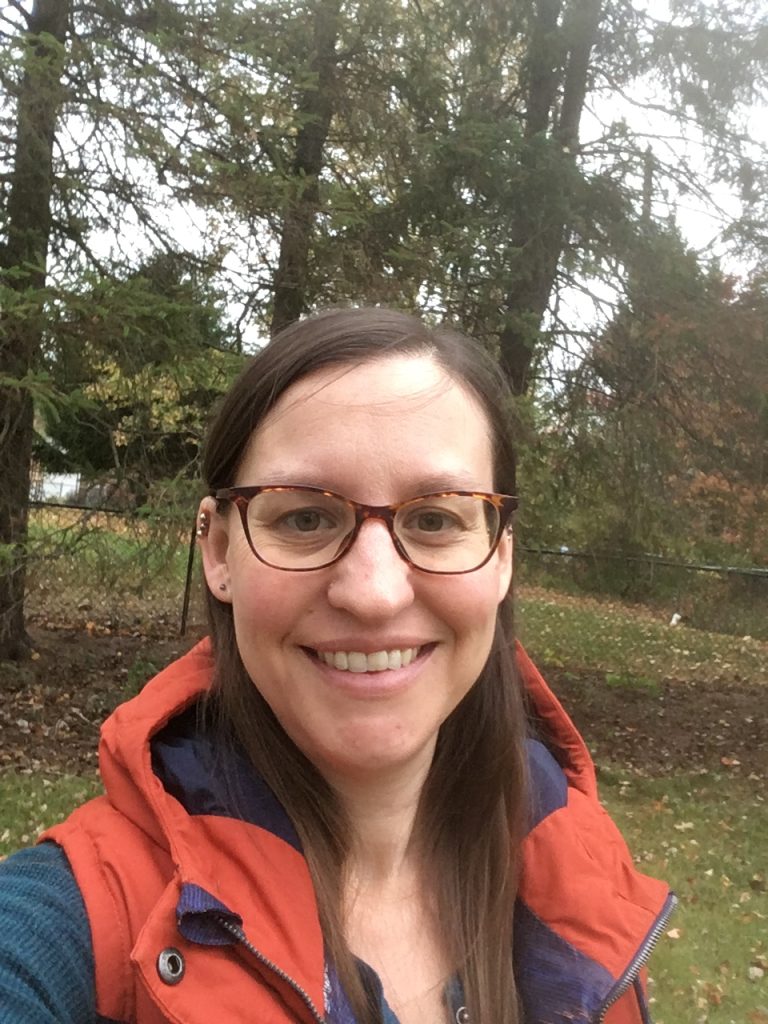
BEDFORD – Cultural heritage surveys are an important step that must be completed before implementing a project in an area of the Hoosier National Forest hit hard by a tornado last year. Archaeology staff at the Hoosier National Forest completed some cultural heritage surveys last summer with assistance from archaeologists from the Hiawatha and Shawnee National Forests. This fall, the Forest Service partnered with Southern Illinois University (SIU) archaeologists to complete the remaining cultural heritage surveys for the Paoli Tornado Research and Response Project.
In August 2023, many trees were damaged by an EF1 tornado within a 281-acre area in the Hoosier National Forest’s Paoli Experimental Forest. In response, Hoosier National Forest staff proposed the Paoli Tornado Response and Research Project to implement salvage logging of the damaged trees and remove the associated stream blockages. Tree planting and deer exclosure fencing will also occur for research purposes.

Cultural heritage survey methods, such as shovel testing, are done within a project area to locate and identify cultural resources judged to be at least 50 years old. Archaeologists find and evaluate those cultural resources based on National Register of Historic Places criteria.

“A shovel test is a standard archaeological survey method that consists of digging a small hole every 50 feet to look for evidence of past human occupation,” said Tesa Villalobos, heritage program manager for Hoosier National Forest. “Soil from the hole is pushed through a mesh screen to find artifacts. This is how archaeologists can identify cultural resources and sites buried in the ground.”
During the screening process, all cultural materials captured by the screen are pulled out and saved in properly labeled plastic bags. Once the shovel test is finished, the soil and other natural materials, such as sticks, stones, and roots, are put back into the hole.
Artifacts are then returned to a lab to be cleaned, analyzed, and prepared for permanent curation at a museum or curation facility that meets federal standards.
“The survey went excellent,” said SIU archeologist Ayla Amadio. “Traversing the damaged area was challenging with so many trees down, and the fieldwork portion took me and my crew nine days to complete.”
SIU archeologists have completed their fieldwork and will write a report with their findings. If archaeological or historic sites are found and potentially eligible for the National Register of Historic Places, they will be protected from disturbance during the project to avoid any adverse effects.
Although this was the first time SIU archeologists have conducted a heritage survey at the Paoli Experimental Forest, it’s not their first time working with the Hoosier National Forest.
“We have been in a partnership with the Hoosier National Forest for over a decade, starting in 2014,” said Amadio. “Our work with them has been focused on on-site protection and damage mitigation throughout the forest. This partnership has helped train recently graduated archaeology students in fieldwork, site identification, site evaluations, artifact analysis, and artifact curation. We hope to continue our partnership with the Hoosier National Forest and look forward to any additional work we can complete to help preserve the culture and history of Indiana.”
In addition to the salvage logging operations and stream blockage removal, research is planned as part of this project. One component of the research will include planting trees in some of the damaged areas and monitoring their growth and survival. Both native trees, such as white oak, northern red oak, and pecan, and tree species found just south of Indiana, such as southern red oak, shortleaf pine, and cedar elm, will be planted.
Understanding the use of salvage logging for transitioning is critical to climate resilience following tornado damage, which is anticipated to increase the frequency and intensity of severe weather events.
The Paoli Experimental Forest was established in 1963 for research and the scientific study of forest ecosystems. Associated research is coordinated between the Hoosier National Forest and the Forest Service’s Northern Research Station.
Forest Service Experimental Areas were congressionally established in 1908 to conduct research and science-oriented monitoring on various land management issues and to communicate active and completed research through demonstration to managers, landowners, policymakers, and society.
For more information on the Paoli Tornado Response and Research Project, click here.



